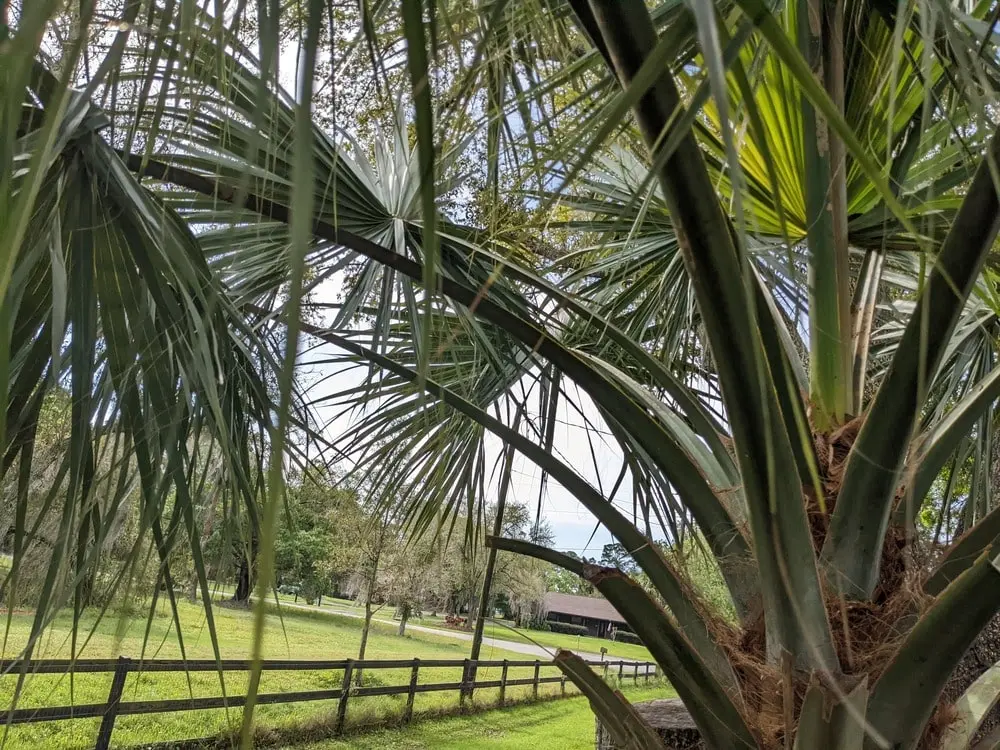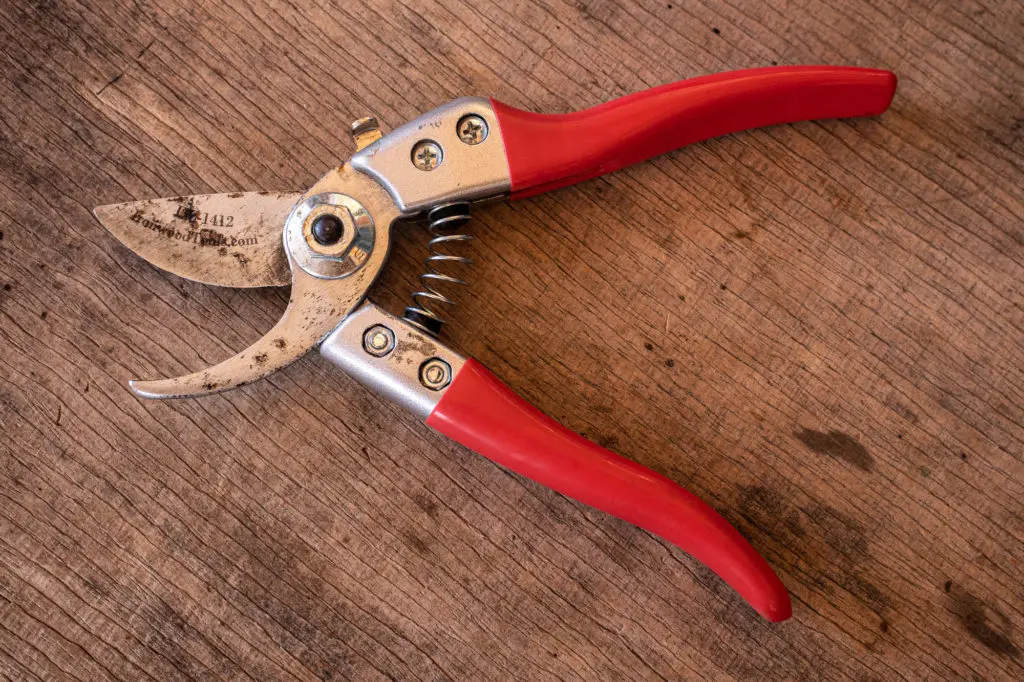By Amanda Rose Newton
Palm trees are an essential part of Florida’s iconic landscape, adding a touch of tropical charm to yards and public spaces alike.

While these elegant trees are generally low-maintenance, they do require occasional pruning to stay healthy and attractive. But not all pruning practices are created equal—especially when it comes to “hurricane cuts.” Let’s explore the healthiest ways to trim a palm tree, why “hurricane cuts” may do more harm than good, and how to keep your palm in tip-top shape.
What Is a “Hurricane Cut,” and Why Is It Popular?
A “hurricane cut” refers to the aggressive pruning of a palm tree, removing all but a few fronds at the very top. The idea behind this practice is that it reduces the wind resistance of the tree, preventing it from being toppled or damaged during a hurricane or tropical storm. While this might sound like a good idea, research shows that hurricane cuts can actually weaken the tree rather than protect it.
Here’s why:
Stress on the Tree: Palm trees store nutrients in their fronds. Removing too many fronds at once deprives the tree of these essential resources, weakening its ability to grow and defend against pests or diseases.
Increased Risk of Disease: Over-pruned palms with exposed trunks are more susceptible to infections like Ganoderma, a fungal disease that can kill palms.
Aesthetic Impact: A palm with few fronds looks sparse and unnatural, detracting from its natural beauty.
Instead of rushing to prune before hurricane season, it’s essential to focus on regular, healthy pruning practices that enhance the tree’s resilience over time.
The Best Way to Prune Palm Trees
To maintain the health and shape of your palm tree, follow these guidelines:
Remove Dead and Dying Fronds:
Focus on removing fronds that are completely brown or yellowed. These fronds are no longer contributing to the tree’s health and can be safely trimmed.
Leave green fronds intact! They are still photosynthesizing and providing the tree with vital nutrients.
Avoid Over-Pruning:
Trim sparingly. A general rule is to avoid pruning above the 9 o’clock and 3 o’clock positions when imagining the canopy as a clock face. Removing fronds above this horizontal line can weaken the tree.
Over-pruning can also leave the tree vulnerable to sunburn, as the trunk and growing tip become overly exposed.
Inspect for Seed Pods and Flowers:
Removing seed pods and flower stalks can help reduce debris and pests in your yard without compromising the health of the tree. This is a good idea if you want a cleaner look or to minimize mess.
Use the Right Tools:
Use sharp, clean pruning tools to prevent damage to the tree and reduce the risk of spreading disease.
Avoid climbing the tree with spikes or nails, as these can puncture the trunk and invite pests or pathogens.
How to Prune Your Palm Tree: The Right Techniques and Angles
Pruning your palm tree correctly ensures it remains healthy and maintains its iconic tropical beauty. Using proper cutting techniques can make all the difference in preventing damage and encouraging growth. Here’s how to prune your palm tree effectively:
Start by Identifying What Needs Trimming:
Focus on fronds that are completely brown or yellow. These are no longer contributing to the tree’s health.
Remove loose or broken fronds hanging below the canopy’s natural curve. Avoid cutting healthy green fronds unless absolutely necessary.
Look for flower stalks or seed pods that can be trimmed to reduce debris.
Choose the Right Tools:
Use clean, sharp pruning shears for smaller fronds.

For thicker fronds on mature palms, a pruning saw works best.
Disinfect your tools with a solution of 70% isopropyl alcohol or a bleach solution before and after pruning to prevent the spread of diseases.
Use Proper Angles When Cutting:
Cut Close to the Base: When removing a frond, make the cut close to the trunk, leaving a small stub (about 1-2 inches). Avoid cutting flush against the trunk, as this can damage the trunk’s surface and invite pests or diseases.
Maintain a Natural Arc: Visualize the fronds as part of a clock face. The healthiest pruning stops at the 9 o’clock and 3 o’clock positions, meaning only the fronds below the horizontal line should be removed. Removing fronds higher than this can weaken the tree and disrupt its natural growth pattern.
Angle the Cut Slightly Downward:
A slight downward angle on your cuts can help shed water away from the cut site, reducing the risk of fungal infections.
Work Gently Around the Crownshaft:
The crownshaft (the green part at the top of the trunk) is the growing point of the palm.

Avoid nicking, cutting, or damaging this area. Any damage here can stunt the tree’s growth or even kill it.
When to Prune Palm Trees
Timing matters when it comes to pruning palms:
Once or Twice a Year: In Florida, the best time for pruning is late spring or early summer, before hurricane season. This allows you to remove dead or weakened fronds that could become projectiles in strong winds.
Avoid Pruning in the Fall or Winter: Pruning too late in the year can leave your tree vulnerable to cold damage if temperatures drop. Palms are less active during these seasons and may struggle to recover from cuts.
How to Dispose of Pruned Material
Dead Fronds: These can be composted or disposed of through yard waste services.
Seed Pods and Flowers: If you’re removing these to reduce debris, consider using them as mulch after they’re dried.
Inspect for Pests Before Disposing: Fronds infested with pests or diseases should be bagged and removed from your property to prevent spreading issues to other plants.
Why Routine Maintenance Is Enough
In most cases, routine maintenance pruning is all your palm tree needs. Regularly trimming dead fronds and seed pods keeps the tree healthy and beautiful without the need for drastic cuts. Well-maintained palms are naturally resilient and better able to handle high winds, reducing the need for hurricane cuts altogether.
If you’re unsure how to prune your palm tree or worried about its structural integrity, consult a certified arborist. They can provide expert advice tailored to your specific tree species and environment.
The Takeaway: Love Your Palms, Trim with Care
Palm trees are hardy, resilient, and incredibly graceful when properly cared for. By avoiding over-pruning and skipping the “hurricane cut,” you can ensure your palm remains strong and stunning for years to come. Remember, the healthiest tree is the one that looks like it belongs on a tropical postcard—full and vibrant, with just enough trimming to keep it looking its best.
Happy pruning!


